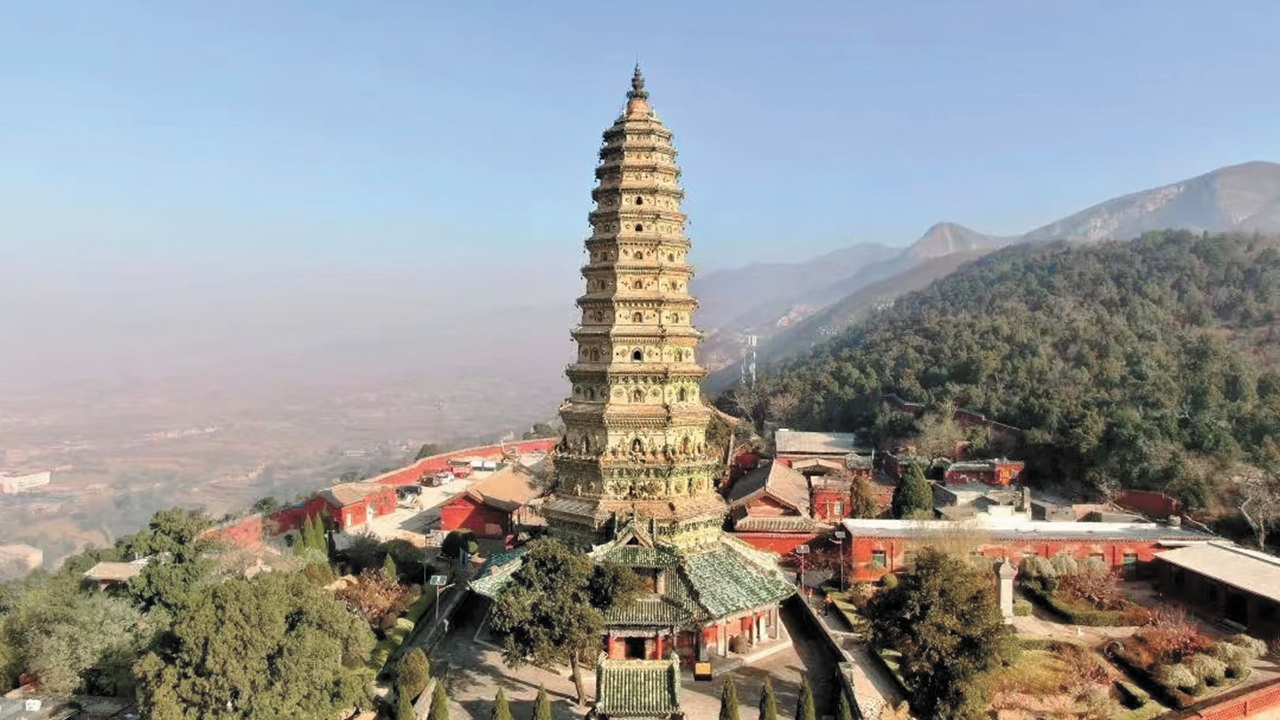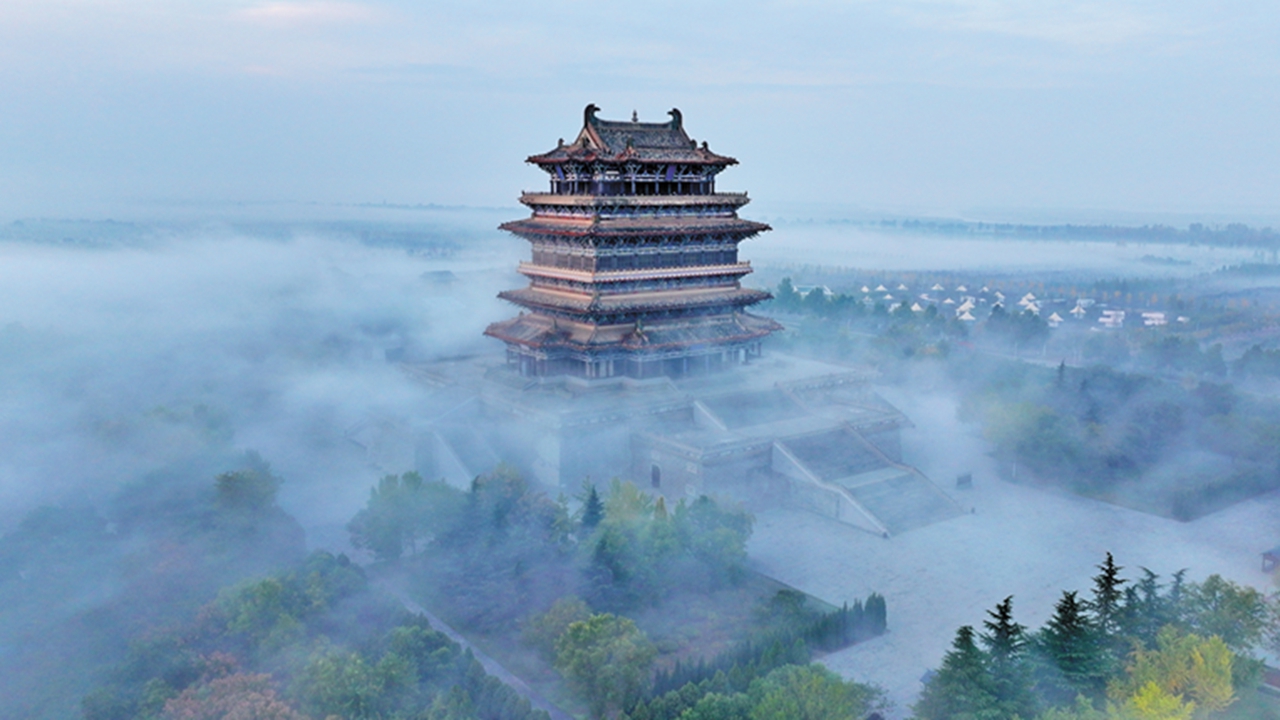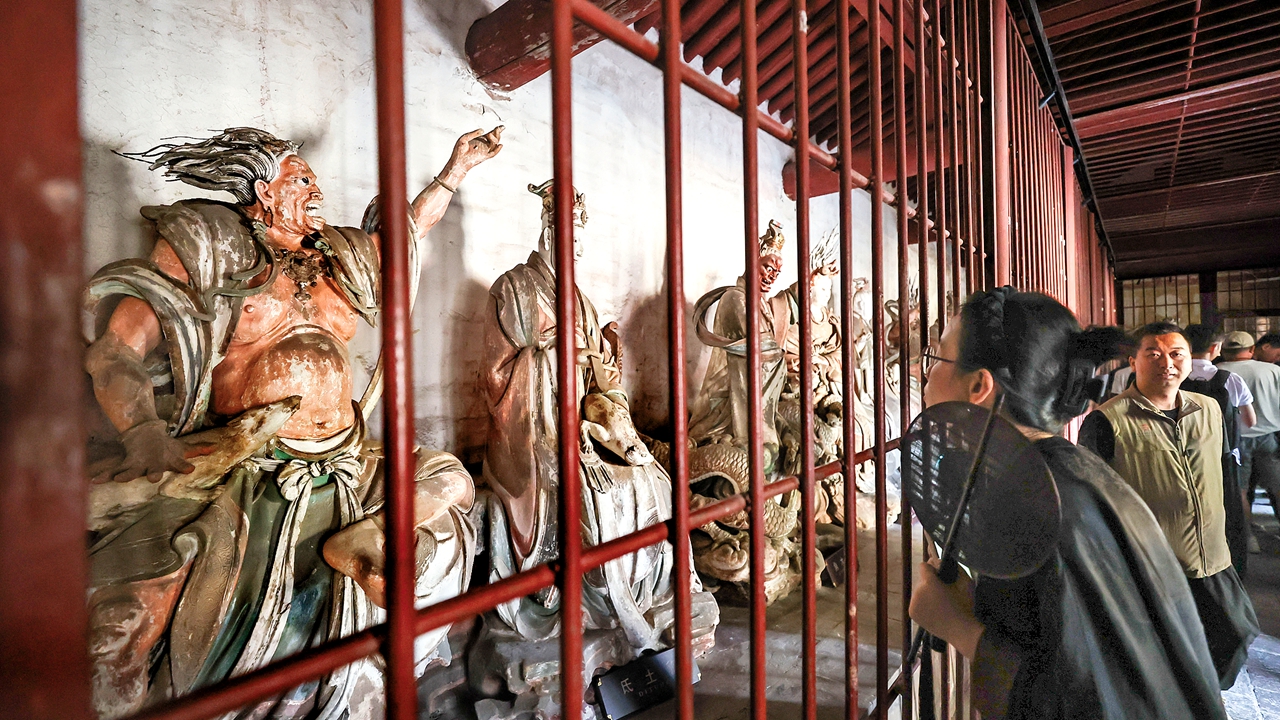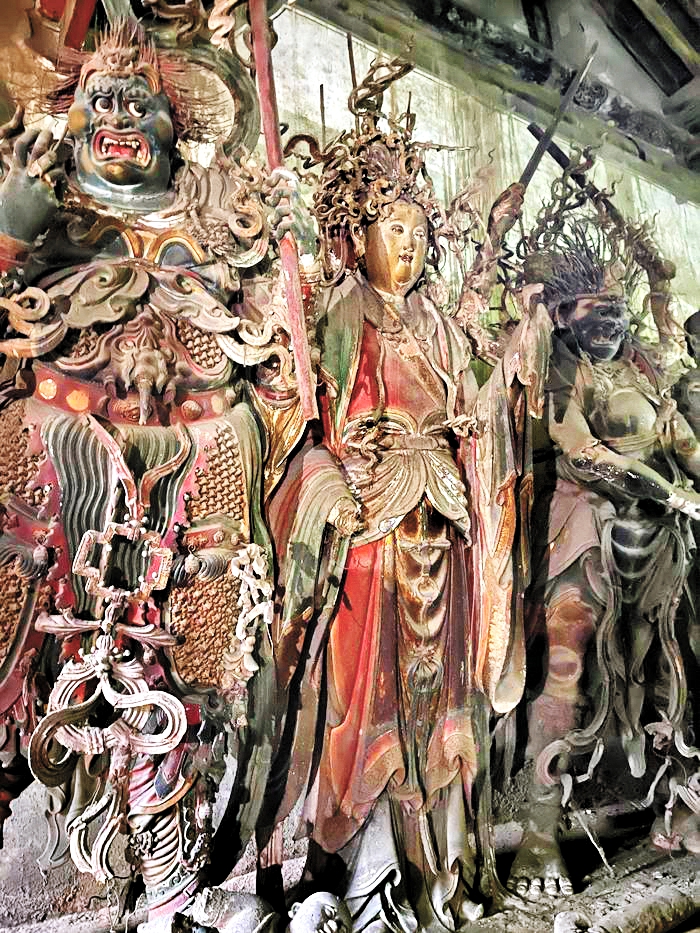Explore the actual locations behind 'Black Myth: Wukong' (II)
Writer: Li Dan | Editor: Lin Qiuying | From: Shenzhen Daily | Updated: 2024-09-02
As the first Chinese game available on Steam, “Black Myth: Wukong” is set in a fantastical version of ancient China. It stands out among Chinese games for its stunning visuals, immersive storytelling and rich cultural inferences.
One of the most striking features of the game is its visual design. It boasts nearly 1:1 reproduction of the landscapes, including the ancient temples, towering peaks, mythical mountains, and enchanted forests. It is said that among the 36 locations that inspired the visuals, 27 are in North China’s Shanxi Province, home to over 80% of China’s ancient wooden structures.
Here we continue our tour to these exciting destinations.
Guangsheng Temple
The sprawling temple complex consists of the upper monastery on the slope of the Huoshan Mountain, and the lower monastery as well as the Water God Temple at the mountain foot in Hongdong County, Linfen City.

An overview of Guangsheng Temple. File photo
Construction began more than 1,800 years ago during the Eastern Han Dynasty (25-220), therefore listing it among the earliest Buddhist temples in China. It was rebuilt several times after being destroyed in wars and natural disasters. Most of the structures and relics we can see today were built during the Yuan (1271-1368) and Ming (1368-1644) dynasties.
The temple has “three treasures”: the glazed pagoda, the Buddhist sutras called Zhaocheng’s Collection and the murals on the walls of the Water God Temple.
Located in the upper monastery, the glazed pagoda, built in 1527, is a 13-story, 47.31-meter-tall octagonal pyramid-shaped tower.
As the multicolored glazed walls and roofs can sometimes turn the sunlight into colorful, rainbow-like reflections, the structure is also called Feihong Pagoda, or Flying Rainbow Pagoda.
On the outer walls and roofs, there are many glazed ornamental pieces featuring figures of humans, auspicious animals and small statues of Buddhas, bodhisattvas and monks. Inside the pagoda’s foundation hall is a 5-meter-tall bronze statue of Sakyamuni Buddha.
In 2018, the London-based World Record Certification recognized it as the tallest multicolored glazed pagoda in the world.
Venue: 17 km northeast of Hongdong County, Linfen City
Guanque Tower
First built as a watchtower during the Northern Zhou Dynasty (557-581), the Guanque Tower was destroyed in a fire in year 1222. Nevertheless, it became a household name in China thanks to the poem “On the Stork Tower” by Tang Dynasty (618-907) poet Wang Zhihuan.

An aerial view of Guanque Tower. Xinhua
The tower we see today was rebuilt in modern times, and opened to the public in October 2002.
The 9-story building stands at 73.9 meters, fitted with stairs and an elevator. Delicate colorful murals adorn the indoor space of the tower, based on research on Tang Dynasty art.
Venue: Puzhou Township, Yongji, Yuncheng City
Yuhuang Temple
Yuhuang Temple is a Taoist temple known for its rich sculpture art and ancient architecture. The temple was first built in year 1076 during the Northern Song Dynasty (960-1127) and has undergone several renovations and expansions throughout history, including a significant rebuild in 1207 during the Jin Dynasty (1115-1234) and an expansion in 1335 during the Yuan Dynasty. Of what remains today, Yuhuang Hall was built in the Northern Song Dynasty and Chengtang Hall in the Jin Dynasty.

Visitors appreciate the sculptures in Yuhuang Temple. Xinhua
Of the more than 280 sculptures housed in the temple, 28 polychrome clay heavenly gods crafted by Yuan Dynasty artist Liu Yuan stand out. Imagining the 28 stars observed in the night sky as gods, the artist helped spread Taoist beliefs through the image of tangible deities. The temple also houses 120 square meters of murals and 36 inscribed steles. The colorful glazed ornaments on the roofs of some temple buildings are also worth admiring.
Venue: Fucheng Village, Jincun Township, Zezhou County, Jincheng City
Tiefo Temple
Hidden in a village courtyard in Jincheng City, Tiefo Temple, or Iron Buddha Temple, is a dream place for culture and art enthusiasts. The temple got its name from an iron Buddha statue that no longer exists. At the center of the main hall sits a giant statue of Gautama Buddha flanked by two Bodhisattvas. But the most eye-catching are the 24 guardian gods surrounding these three, each with dramatic facial expressions and in various postures. Their hair and accessories are crafted with iron wires, a material commonly available in the region. The focus on lines in sculptures also speaks of the strong influence of Chinese painting, which is distinctive from Western sculptures.

Statues inside Tiefo Temple. File photo
The temple opens from Tuesday to Sunday between 9 a.m. and 5:30 p.m. While admissions are free, visitors —only 500 are allowed daily — need to reserve online in advance.
Venue: Mixi Village, Gaoping, Jincheng City